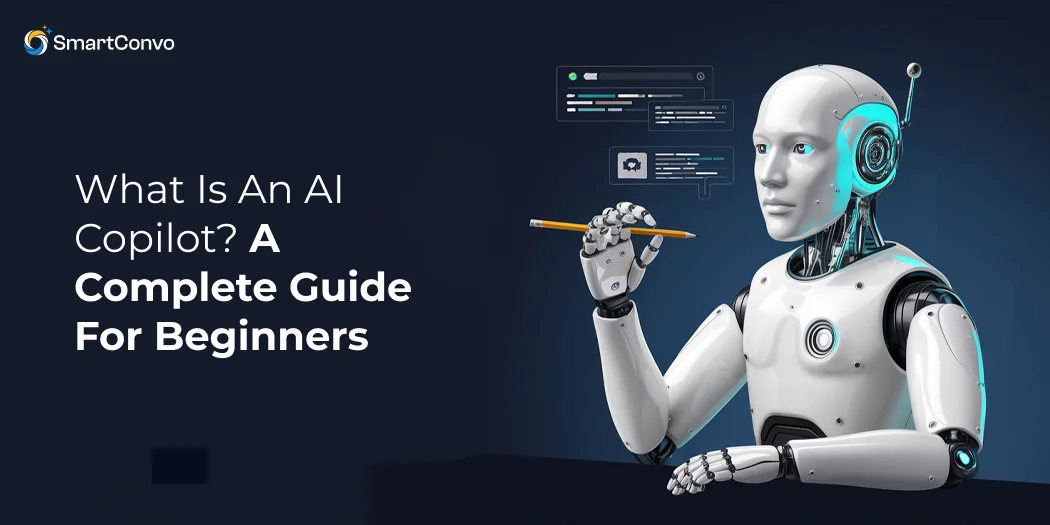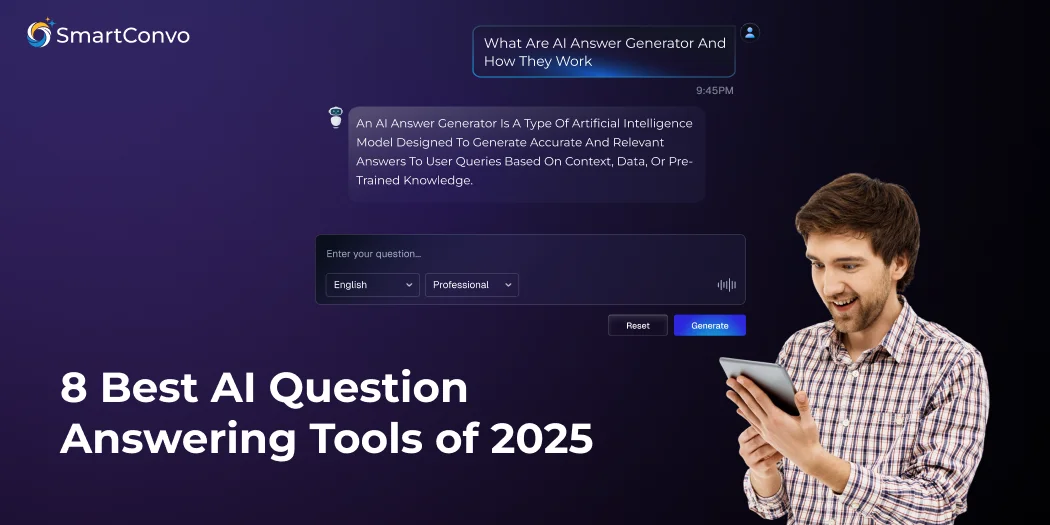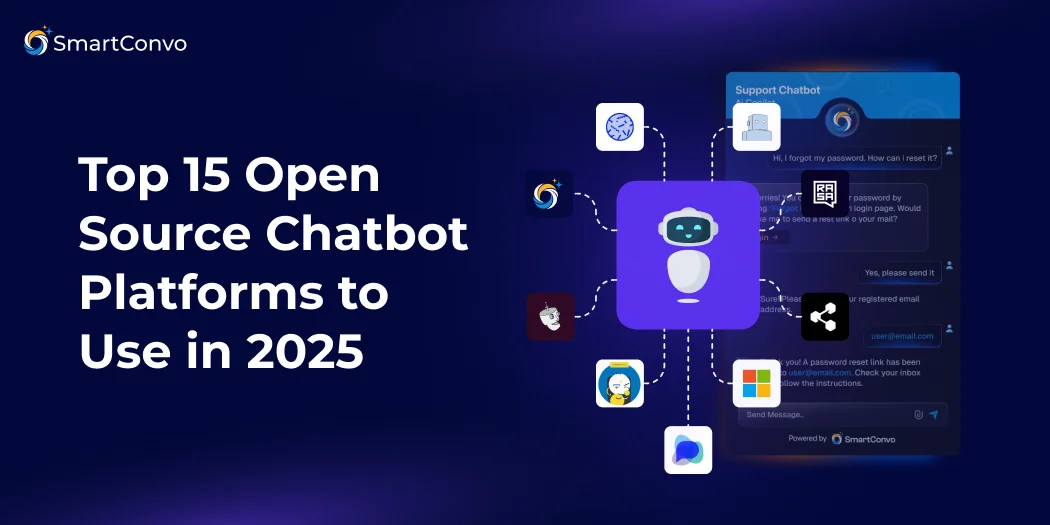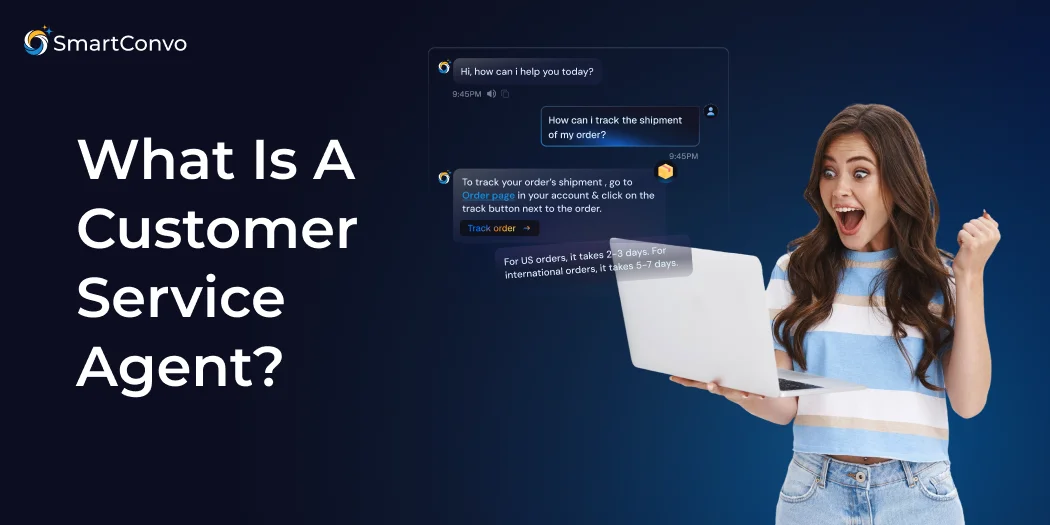AI Copilots are shaping the future of technology, enhancing productivity, creativity, and decision-making across industries. From assisting with day-to-day tasks to improving complex workflows, AI copilots are rapidly becoming a game-changer for startups, tech enthusiasts, and software developers alike. But what is AI Copilot, exactly?
This guide is here to break it all down. You’ll learn about what an AI Copilot is, how it functions, and the benefits it brings to the table. We’ll also explore real-life applications, practical use cases, and how AI copilots are assisting various business functions like sales, marketing, IT, HR, customer support, and beyond. From generating creative ideas to streamlining operations, these tools are being adopted across industries to drive innovation and efficiency.
If you’re new to the concept or wondering how to integrate AI copilots into your business, this guide will leave you well-informed and ready to explore the possibilities.
What Are AI Copilots?
An AI Copilot is a specialized artificial intelligence tool designed to assist users by acting as a “co-pilot” for their tasks. Think of it as a virtual assistant that goes beyond basic automation to offer real-time, context-aware support.
Unlike simple AI tools, an AI Copilot doesn’t merely follow commands—it understands your goals and responds thoughtfully using advanced algorithms, machine learning, and natural language processing (NLP). Its main goal? To enhance efficiency and decision-making in everything from crafting emails to managing enterprise-scale projects.
Popular examples of AI copilots include GitHub Copilot for coding, Grammarly for writing, and customer-service copilots that boost productivity in sales or HR.
How Does an AI Copilot Work?
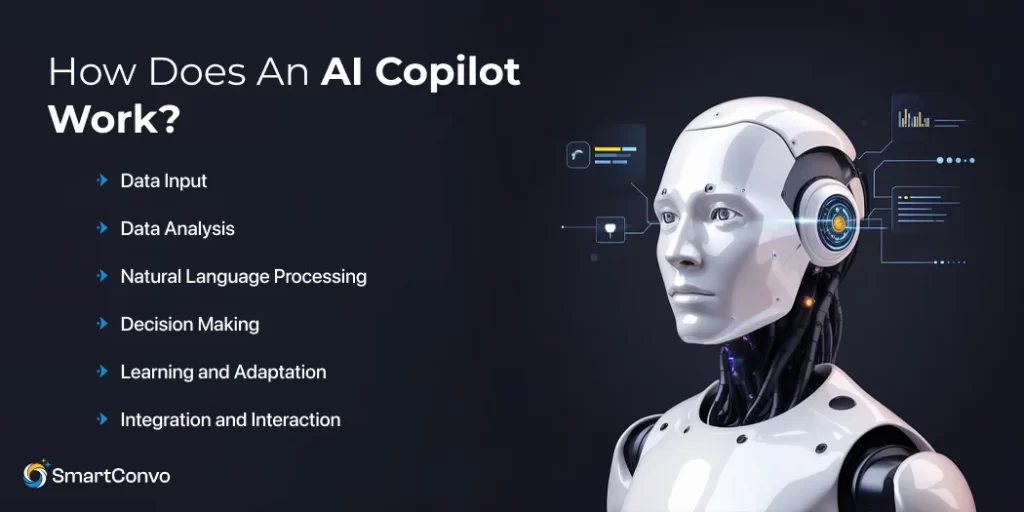
Behind the seamless interactions and instant recommendations is a complex mechanism. Here’s the step-by-step breakdown of how an AI copilot functions:
Data Input
The copilot collects data through various input sources such as text, voice, images, or integrated software tools, making it a versatile and powerful tool for a range of tasks. For instance, while working on software development, you may input a coding query in natural language or provide snippets of code for clarification.
Data Analysis
Once data is inputted, the AI Copilot analyzes it using sophisticated machine learning algorithms and large language models (LLMs). These LLMs, including advanced systems like OpenAI’s GPT, are designed to interpret the context, intent, and nuances behind the input.
Natural Language Processing
The processed input is translated into actionable responses through natural language processing (NLP), a key technology that enables computers to understand and interpret human language. NLP allows the copilot to comprehend complex sentences, idiomatic expressions, or technical jargon, breaking down language into meaningful components.
Decision Making
AI copilots leverage pre-trained machine learning (ML) models and contextual data to create personalized solutions or recommendations, enhancing user experience and efficiency. These systems are designed to analyze large amounts of data quickly and accurately, allowing them to adapt to specific needs in real time.
Learning and Adaptation
An AI copilot is a smart assistant that improves over time by learning from patterns and user feedback. By analyzing how it’s used and the results it delivers, it continually refines its recommendations to become more accurate and helpful. This adaptive capability is especially important for businesses operating in dynamic environments, where demands and challenges are constantly changing.
Integration and Interaction
One of the hallmarks of AI copilots is their versatility. These intelligent tools integrate seamlessly with a wide range of software, including Microsoft Office, popular productivity tools, and specialized systems like Document AI for Knowledge Management. By doing so, they streamline processes, automate routine tasks, and provide valuable insights.
What Are the Benefits of Using an AI Copilot?
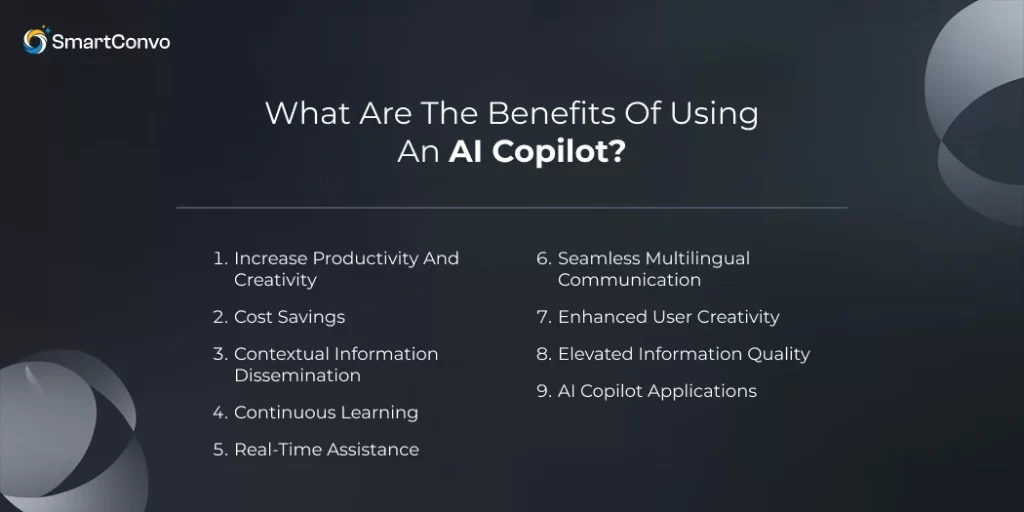
Wondering if an AI Copilot is worth the investment? This game-changing tool can streamline tasks, boost productivity, and provide real-time insights tailored to your needs. The AI Copilot definition refers to an intelligent assistant designed to enhance workflows, automate repetitive tasks, and support decision-making. Here’s a list of compelling benefits to help you decide.
1. Increased Productivity and Creativity
AI copilots are transforming the way we work by automating repetitive tasks, freeing up valuable time for more meaningful activities. Instead of getting bogged down with mundane or time-consuming processes, these tools allow users to focus on higher-level thinking and innovation. What’s more, they actively encourage creativity by offering fresh perspectives, alternate phrasing, or even new ideas, much like popular tools such as Jasper or Grammarly.
2. Cost Savings
By automating time-consuming tasks, companies can significantly reduce labor costs while reallocating resources to more strategic activities. Automation not only cuts down on repetitive manual work but also minimizes errors, leading to improvements in output quality and overall efficiency. This allows businesses to focus on innovation and growth while maintaining higher standards in their operations.
3. Real-Time Assistance
Whether it’s troubleshooting complex code errors, brainstorming creative ideas, or drafting the perfect marketing email, your AI copilot is here to provide instantaneous and reliable assistance. It’s like having an expert by your side, ready to help you tackle tasks efficiently and with precision.
4. Contextual Information Dissemination
AI copilots excel at breaking down complex information into concise, easy-to-understand summaries, helping users quickly access actionable insights. By streamlining data analysis and presenting key takeaways, these tools empower individuals and organizations to make informed decisions more efficiently and effectively.
5. Continuous Learning
Thanks to machine learning algorithms, copilots grow smarter with use, continuously analyzing data and learning from user interactions. Over time, they adapt to your unique workflows and preferences, ensuring their recommendations evolve alongside your business needs and deliver more accurate, personalized support.
6. Seamless Multilingual Communication
Need to communicate across borders? AI copilots powered by Natural Language Processing (NLP) can translate content instantly, bridging language gaps with ease. These tools ensure accurate translations, making it easier to connect with global audiences and streamline international communication.
7. Enhanced User Creativity
Creative professionals, meet your new best friend! Whether you’re designing stunning visuals, brainstorming groundbreaking ideas, or streamlining your workflow, AI copilots are here to help. These advanced tools offer unmatched assistance, providing smart suggestions, speeding up tedious tasks, and giving you more time to focus on creativity.
Use cases for AI copilots
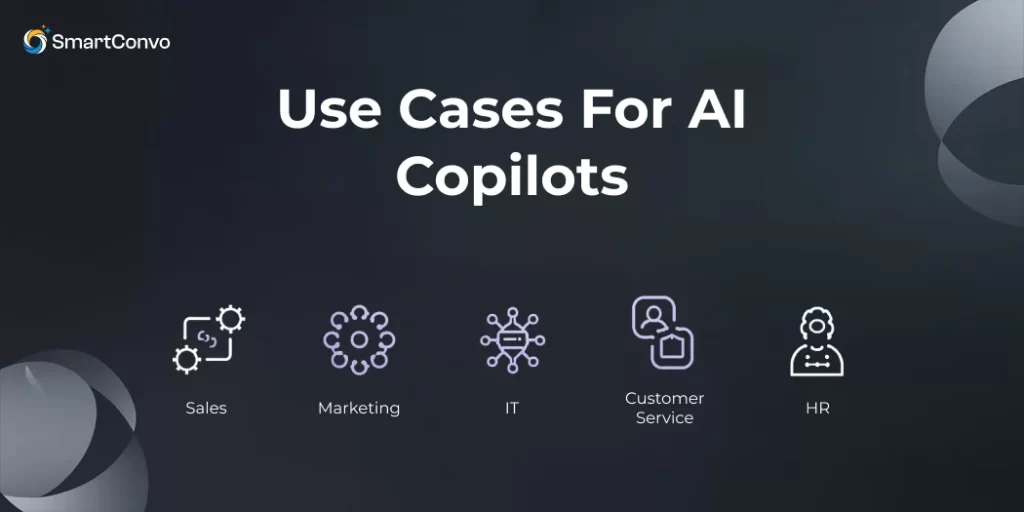
AI copilots are transforming the way businesses operate, finding applications in nearly every function across various industries. From streamlining workflows to enhancing decision-making, these tools are becoming essential.
Sales
Tools like sales chatbot powered by Conversational AI for Sales are transforming the way sales teams operate by helping them identify high-quality leads, craft personalized and engaging pitches, and streamline workflows for greater efficiency. These tools leverage advanced AI technology to analyze customer data, predict buying behaviors, and automate repetitive tasks, allowing sales teams to focus on building stronger relationships and closing deals faster.
Marketing
From improving ad copy to optimizing campaigns, AI copilots are transforming the way marketers approach strategy and creativity. These tools not only assist in crafting engaging and effective ad copy but also help fine-tune campaigns for better performance. By leveraging Generative AI Integration, they can analyze data, uncover valuable insights, and even brainstorm creative ideas, enabling marketers to make smarter, data-driven decisions while saving time and resources.
IT
AI copilots can debug, streamline coding workflows, and manage performance monitoring, making them indispensable tools for modern developers and IT teams. Using advanced platforms like Enterprise AI, these copilots can automate repetitive tasks, identify issues faster, and optimize system performance. For example, LLM chatbots can assist IT teams not only by troubleshooting complex systems but also by providing real-time solutions, generating code snippets, and offering insights to prevent future issues, ultimately boosting efficiency and reducing downtime.
Customer Service
Using AI Sales Chatbots or AI Chatbots With Knowledge Bases, businesses can provide 24/7 support, ensuring customers always have access to assistance, no matter the time of day. These chatbots can handle routine inquiries, guide users through common issues, and even assist with product recommendations, all while reducing labor-intensive tasks and freeing up human teams to focus on more complex or strategic work.
HR
AI copilots in Conversational AI in HR play a crucial role in transforming human resource processes. HR chatbot assists in recruitment by automating candidate screening and scheduling interviews, streamline onboarding by guiding new hires through personalized workflows, and improve HR Case Management by efficiently resolving employee queries. These systems also leverage tools like a Knowledge Base for HR to provide instant access to relevant information, reducing response times and enhancing the overall employee experience.
How to Get Started with AI Copilot
Here’s how you can begin integrating AI copilots into your workflow, step by step. Start by identifying specific tasks or processes where AI can assist, such as data analysis, content creation, or customer support.
1. Identify Needs
Determine which area of your business, such as customer service, human resources (HR), or even marketing, would benefit the most from automation. Consider processes that are repetitive, time-consuming, or prone to human error, as these are often the best candidates for automation.
2. Research Tools
Depending on your use case, explore tools like GitHub Copilot, Jasper, or Microsoft Copilot to meet your software-specific requirements. GitHub Copilot is excellent for assisting developers with coding by generating suggestions and automating repetitive tasks. Jasper is tailored for content creation, helping write marketing copy, blogs, or emails with ease.
3. Trial Software
Many AI copilots offer free trials, giving you the chance to explore their features and see how they can fit your needs before making a commitment. These trials often include access to core functionalities, allowing you to test their efficiency, ease of use, and overall value for your workflows.
4. Integrate and Test
Incorporate the chosen AI solutions into your existing workflows, ensuring smooth compatibility with current systems and processes. Take the time to identify potential integration challenges, test the solutions thoroughly, and provide necessary training to team members for a seamless transition. This will ensure that your AI copilot solution enhances productivity without disrupting daily operations.
5. Train Employees
Train your staff to use AI copilots effectively to maximize productivity and unlock their full potential. By providing proper training, employees can learn how to integrate AI tools into their workflows, enhance decision-making, and streamline daily tasks for better results.
The Future of AI Copilots
AI copilots are paving the way for a future where human creativity and machine efficiency coexist seamlessly, transforming how we work and innovate. These tools, powered by advancements in Generative AI, are revolutionizing workplace efficacy by automating repetitive tasks, providing data-driven insights, and assisting with complex problem-solving. By leveraging cutting-edge knowledge in AI, they enable teams to focus on strategic and creative work, boosting overall productivity.
For businesses, integrating AI copilots isn’t just about keeping up with trends—it’s about staying ahead in an increasingly tech-centric world. Companies that adopt these tools can streamline operations, improve decision-making, and create a more efficient workforce. The possibilities are endless, and those who embrace AI copilots now will be well-positioned to thrive in the future of work.
How SmartConvo Can Help with AI Copilots
Looking for a smarter way to integrate AI copilots into your business? At SmartConvo, we specialize in delivering practical and user-friendly tools designed for enterprises of all sizes. Our solutions help you streamline operations, boost productivity, and maximize efficiency without ever compromising innovation. Whether it’s Helpdesk Knowledge Base support to improve customer interactions or Document AI for Knowledge Management to simplify information processing, we’ve got you covered.
With SmartConvo, you can harness the power of AI to tackle complex challenges, save time, and drive better results. Sign up for free and discover how copilot AI can transform your business today!
Turn your data into a smart chatbot that understands your business and delivers instant, accurate responses. Get started today and see how your data can drive smarter conversations and boost efficiency across your organization.
Get Started Today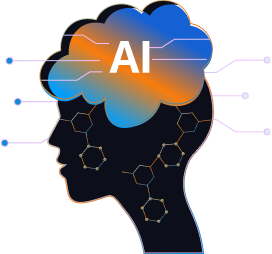

Conclusion
Integrating an AI Copilot into your workflow isn’t just about convenience—it’s about staying ahead in an innovation-driven world where efficiency and creativity are key. These AI tools are designed to work alongside professionals, offering support and enhancing productivity across various industries. Whether you’re a content creator looking to brainstorm ideas and draft compelling articles, an HR professional streamlining recruitment and onboarding processes, or a business leader seeking insights to make data-driven decisions, AI copilots can amplify your abilities and help you achieve more in less time.
Frequently Asked Questions (FAQ)
AI copilots are widely used in industries like healthcare, finance, retail, IT, and HR to improve processes and workflows.
No, AI copilots are designed to work alongside humans, enhancing productivity rather than replacing roles.
Many offer free tiers or trials, but advanced features may require subscription plans.
They are highly accurate but may occasionally require user verification, especially in complex scenarios.
For beginners, tools like Grammarly, GitHub Copilot, and Jasper offer user-friendly features to explore the potential of AI copilots.




